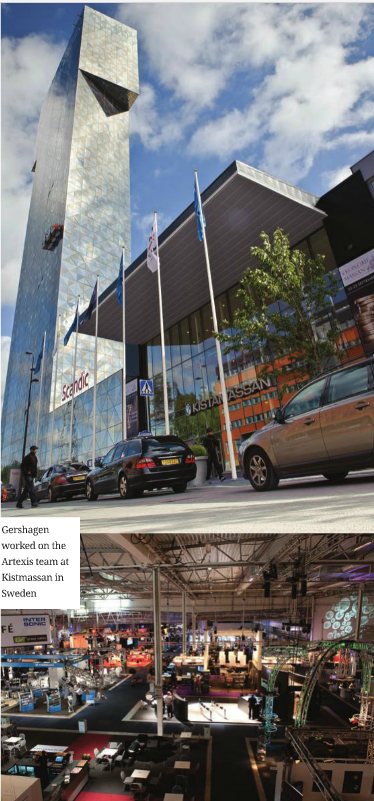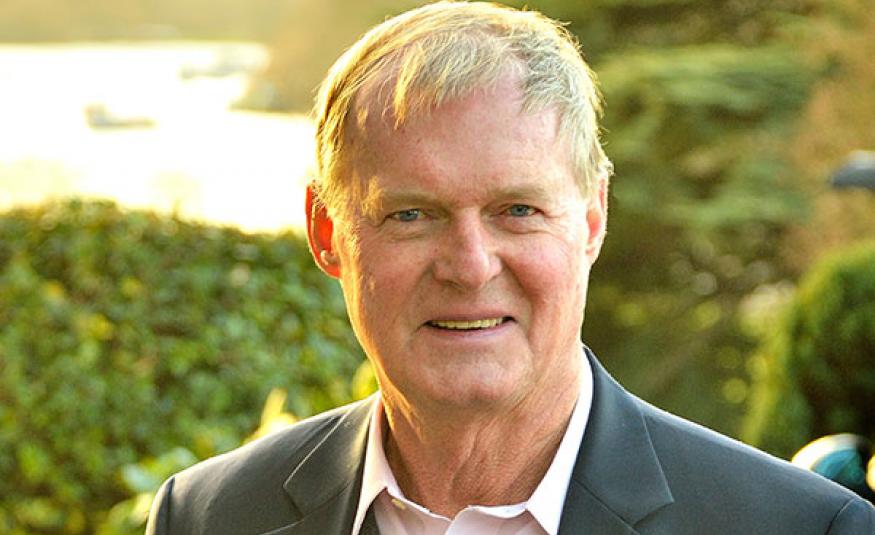Håkan Gershagen reflects on 45 years of exhibition experience, and the evolution of the industry as we know it today
- Interview by Antony Reeve-Crook
“When I started out on my first exhibitions industry job in 1973 as an outsider and entrepreneur, the front of the sales brochure in my hand  showed a photo of the venue and inside, the shows we sold. And B2B, B2C, hi-tech or low-tech, boat show or antiques fair; they all had the same square metre price. There was hardly any marketing.
showed a photo of the venue and inside, the shows we sold. And B2B, B2C, hi-tech or low-tech, boat show or antiques fair; they all had the same square metre price. There was hardly any marketing.
“So I asked one of the MDs in Sweden about this particular show: ‘what is the target group of visitors for this?’. He looked at me as though I was coming down from the moon; and eventually said: ‘well it’s those who will come isn’t it?’.
“No vision of community, or the industry for whom we are going to put an event together. It was about selling square metres to exhibitors pure and simple. Whoever came to the show became, almost by coincidence, the target group.
“Today things are the other way around. Everybody understands – as with publishing – that exhibitions start by satisfying the visitors.”
The global exhibitions landscape has changed a great deal in the past half century. Much of what we take for granted evolved during this period and few people in our industry have such knowledge of this evolution, or the European exhibition industry, as Håkan Gershagen.
This magazine would certainly be a lot slimmer if not for the emergence of exhibition acquisitions as a thing. But the fact is, in the Seventies and Eighties acquisitions were far and few between.
“People would ask ‘how can you buy an exhibition?’ It was inconceivable – it was a service that you provide,” exclaims Gershagen. “Still today when I speak to people not in the exhibition they look at me and ask how a company can buy an exhibition. I try to explain to them it’s a marketplace, like a conference or a trade publication – which of course you can buy and sell. Acquisitions were a big unknown.
“The UK and US have been leading the world in developing international exhibitions. It probably comes from the old colonialism, the empire spirit; the Brits still think they run the world and, in this industry at least, to a great extent they do. The English language is the leading language in the world, therefore English publishers are international and it follows that many exhibition organisers grew out of publishing – Reed for example.
“It wasn’t rocket science for the international publisher to say ‘I run an international technology show in Brighton, and now I’m going to run it in Singapore and Australia, because we have our publication in those countries’.
“The first wave was the Brits, then the Germans, then the odd French or Dutch, but nothing substantial. America has always failed, the sheer size of their market makes them complacent, and the associations keep their remit domestic. I’ve seen some examples of them trying to come over to Europe, but nine times out of ten they have failed. There are some success stories; Diversified with its seafood show is one of them.”
However as we head into the third decade of the 21st century, Gershagen says we are likely to see Chinese organisers come into the international market and start taking their shows into international waters.
 A handful of choices and a pocketful of luck
A handful of choices and a pocketful of luck
Gershagen used to tell his staff, his children even, that if they take the long view and consider how many of their decisions were really key in forming their career, or their life, that they might surprise themselves.
“You don’t have a hundred decisions; you have a handful,” he says. ”And I would say the same thing with my exhibition career. There are half a dozen steps or decisions or projects that created the story, the rest is just filling in.”
Perhaps two of Hakan’s more formative decisions can be traced back to his appointments at Reed and Easyfairs. Back in the Seventies and Eighties Gershagen was acting as an agent for foreign organisers and when ITF and Cahners came together in the late Eighties to form Reed Exhibitions, there were two agencies in the Nordic region – one for each company. As luck would have it, the decision was made to select Gershagen.
“It was not a big management decision, but it affected me because I was appointed by Mike. Those years with Reed were the best business university you could ever hope for,” he says. Gershagen is of course referring to Mike Rusbridge, with whom he formed a long friendship.
So I joined Reed and moved to Brussels in 1990. I packed my life into two suitcases, bought myself a fax machine and a car and rented a house, and then we started looking for companies to buy. The second of these was Eric’s company.”
Gershagen was part of the team that together with Rusbridge bought Eric Everard’s first business, the Comedia Group.
“We made him a multi-millionaire back when he was 27. He claims 26, but negotiations went on a bit, so I think took him past his 27th birthday,” he says. “Easyfairs was formed in 2013 and I was selected to be the first CEO. One of may favourite sayings is once I was his boss, now he is my boss; something must have gone wrong.
Were he to restart his career in today’s market however, he knows where he would try and position himself.
“When we brought computers into Interplas in 1981, we changed the world. We were computerising visitor registration prior to and during the show, through a service provider named Coventry Data.
“That was the first instance of it in the exhibition industry, and now it’s gone 360 degrees, moving the business model into a new dimension of supply and demand. Computerisation would prove to have an impact on everything. The 365-days-a-year business model, pricing strategy – everything. It’s not about using your computer to do digitalisation, it’s all about the whole business model, being the Uber in the taxi business, or AirBnB in the hotel business. It’s changing the model.
“And the big players will have the upper hand because they will have the resources to make this investment across their portfolio, the small entrepreneur cannot afford that investment.”
“Today the brave pricing strategy would be to charge for the value we give to exhibitors and visitors. Precisely how we define that I do not know, but that should be the strategic intent,” he says, before reflecting upon the converstion that opened this interview.
“One thing’s for certain; we’ve come a long way since trading on the price per square metre.”
Read the interview in Exhibition World (Issue 3 | 2018), online here:






